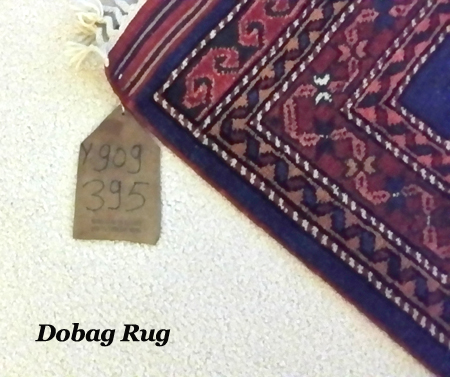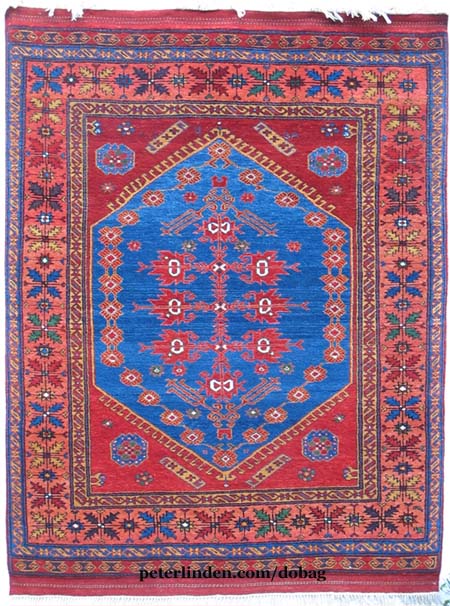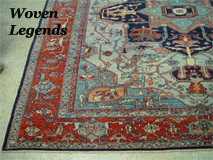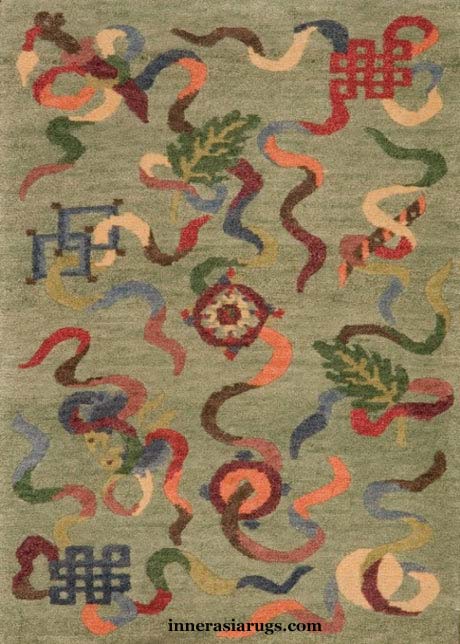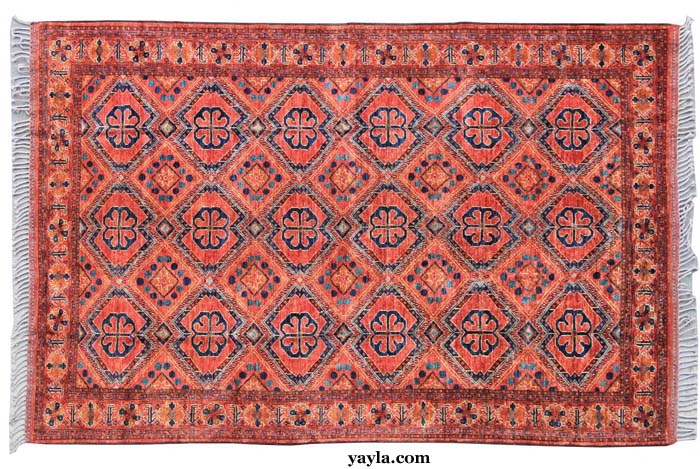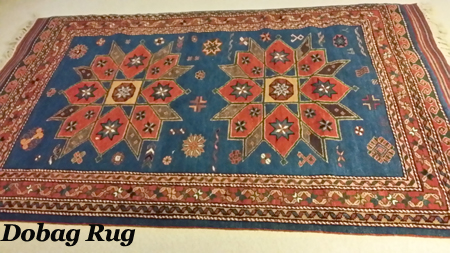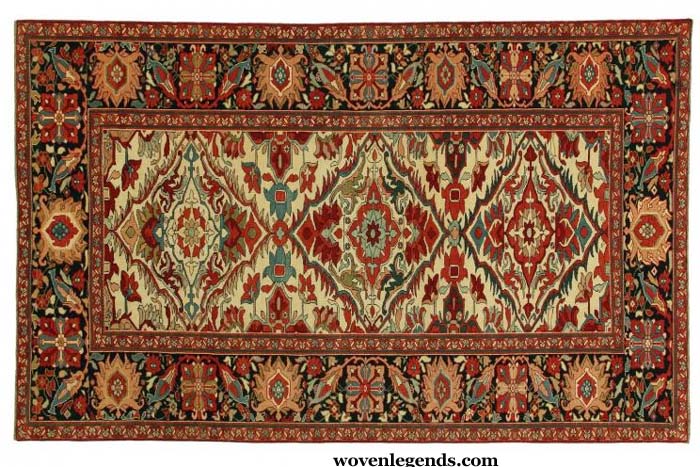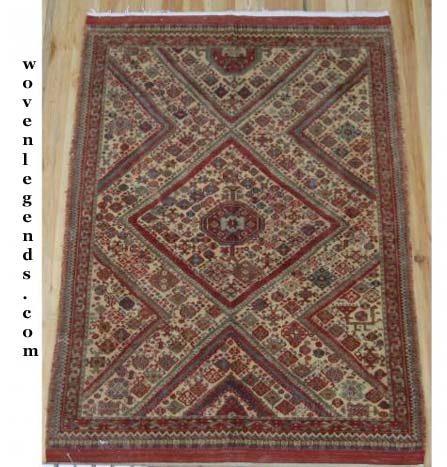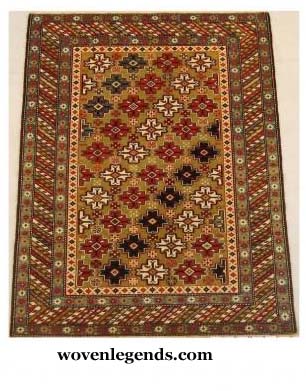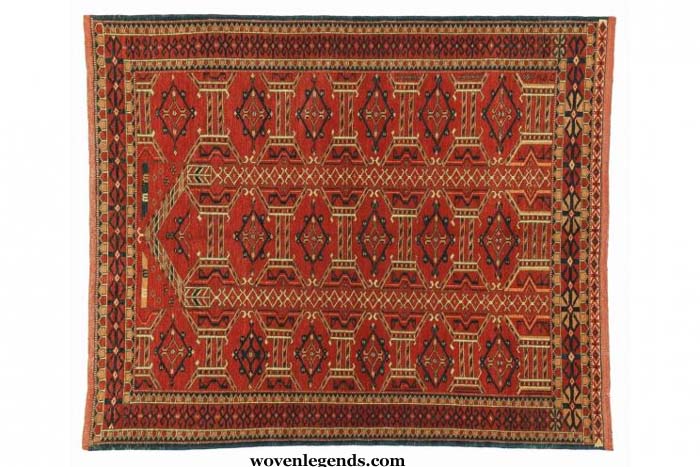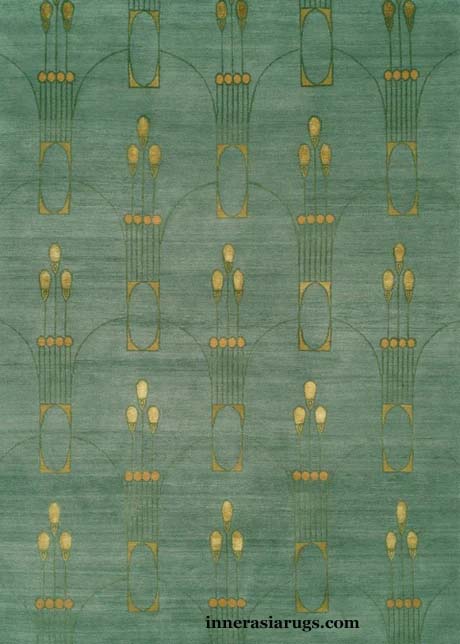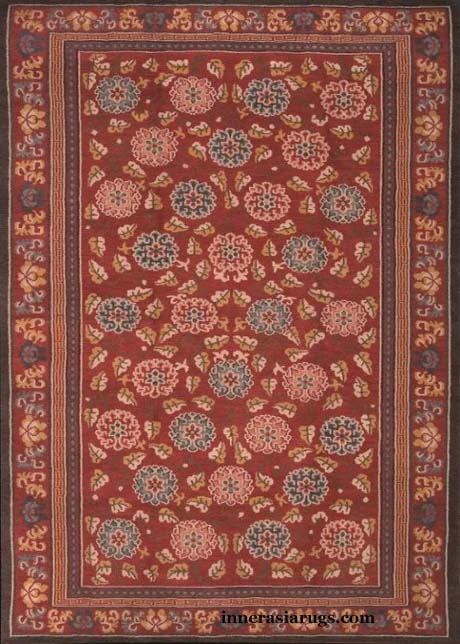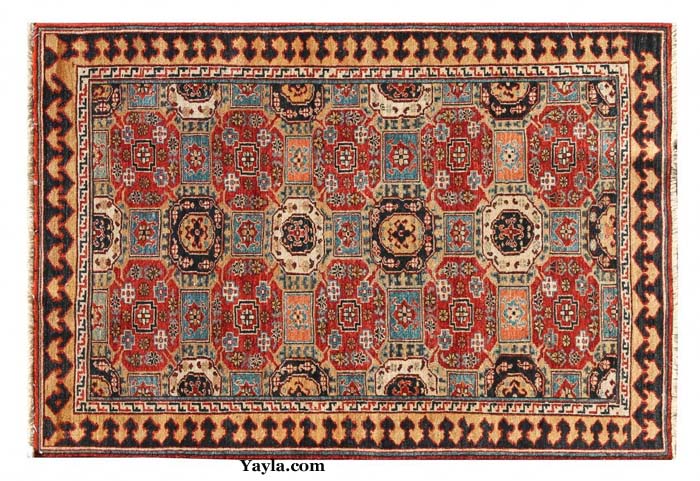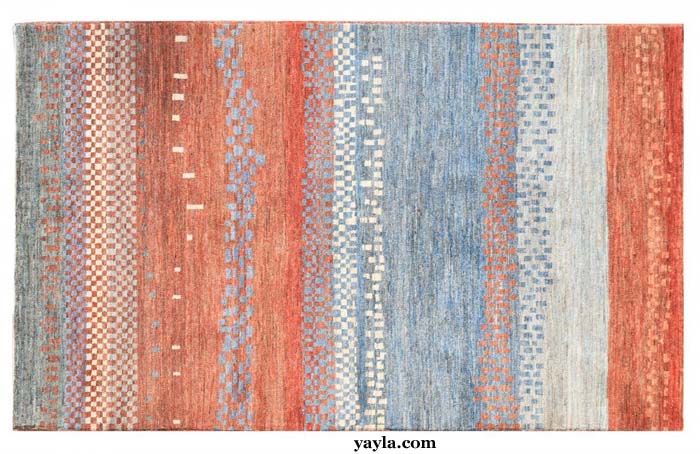CONTEMPORARY AND COLLECTIBLE RUGS
FOR THE ORIENTAL RUG
CONSUMER
It may be surprising to see the words 'contemporary' and 'collectible' in the same sentence with 'oriental rugs'! Today, it seems that sub-standard weaving from many different countries, featuring cheap reproductions of popular designs using synthetic dyes, are flooding the market. It is good to know that consumers wishing to purchase oriental rugs do have viable options for excellent quality contemporary and collectible rugs.
There are several examples of weaving enterprises, most in operation today, that are indeed producing both contemporary and collectible rugs. A few are mentioned below:
THE DOBAG PROJECT
The Dobag Project (do-ba) (Dogal Boya Arsatirm ve Gelistirn Projesi) was a Turkish enterprise which stands for the Natural Dye Research and Development Project, established in 1981 in Northwestern Turkey through the research and efforts of German chemist and rug scholar, Dr. Harold Bohmer. The rugs were woven with natural, vibrant vegetable dye methods and were never treated with any chemical or aging treatment. Although they used traditional designs, the weaver was the one who chose the combination of motifs and colors.
Each rug is registered, and the number is recorded on an attached leather tag. This tag contains the size, knot count, and names of the weaver and her village, and guarantees the quality of the rug.
Sadly, the DOBAG project is no longer in operation as of June 2021. The people are in a much better position financially to send their children off to higher levels of education and young people are no longer interested in a career in weaving.
AZERI RUGS and WOVEN LEGENDS
George Jevremovic, founder of Philadelphia-based Woven Legends, organized Azeri rug production in Eastern Turkey in 1982. Weavers of Azeri rugs borrowed designs from other weaving areas and combined them with Turkish motifs. Sometimes this combination could be a bit unusual though they are and were very popular.
The quality of the rugs is comparable to the DOBAG rugs, and like the DOBAG, only natural dyes were used, and no chemical or aging treatments were allowed. Azeri rugs are no longer being woven but have evolved into a number of other beautifully woven rugs produced today by Woven Legends.
Since 2011, these excellent contemporary rugs equal to carpets made centuries ago, are being woven by young Syrian refugees in Turkish refugee camps through the Anka project, begun by Turkish-born Neslihan Jevremovic. Her rug store can be found at: Woven Legends, 8140 Germantown Ave, Philadelphia, PA 19118, 215-849-8344, and at www.wovenlegends.com.
GANGCHEN
(SNOWLAND)
TIBETAN RUGS
In the late 1980s, American-educated Kesang Tashi, along with his partner, George Doubleday, started rug manufacturing in Lhasa, Tibet in order to revitalize the Tibetan rug industry in its own homeland (after weavers were forced to find refuge in Nepal during the Chinese takeover of Tibet in 1959).
The production is called INNERASIA TRADING. The Tibetan wool for these rugs is hand-spun and colored with both natural and high-quality Swiss synthetic dyes.
The combination of excellent wool from Tibetan highland sheep and the availability of both male and female weavers using traditional rug motifs that were not being produced elsewhere make these rugs highly collectible.
Innerasia Rugs can be found and purchased at innerasiarugs.com.
AFGHAN RUG PROJECT
Cambridge, Massachusetts-based Chris Walter, helped in part by an organization called Cultural Survival, along with Jora Agha, a Turkoman from northern Afghanistan, saw the need for an Afghan project similar to DOBAG. These men worked with the Turkoman weavers who were Afghan refugees in Pakistan.
In 1980, YAYLA TRIBAL RUGS was founded. The goal of the project was to re-introduce vegetable dyes to hand-spun Afghan wool using traditional designs unlike the very limited ones used by Turkoman weavers for commercial markets.
Yayla Tribal Rugs in Cambridge, Massachusetts can be found at www.yayla.com.
In 1988, Walter set up the CULTURAL SURVIVAL BARAKAT ERSARI PROJECT, reviving the art of the traditional Ersari weavers. As with the DOBAG and Azeri rugs, all of these are hand-carded, hand-spun, and vegetable-dyed. No chemical or aging treatments are allowed.
Since 2004 all the Ersari carpets for the Ersari Project begun by Chris Walter and Jora Agha have been woven in Aqcha in Jowzjan province of northern Afghanistan. Chris Walter has also founded Cultural Survival weaving projects in Nepal, India, Afghanistan, as well as Pakistan.
If you would like to find out more about different types of oriental rugs, please see the articles on our website here.
Top of Contemporary and Collectible Rugs
"The Cleanest Clean You've Ever Seen."
by
ABC Oriental Rug & Carpet Cleaning Co.
130 Cecil Malone Drive Ithaca, NY 14850
607-272-1566
